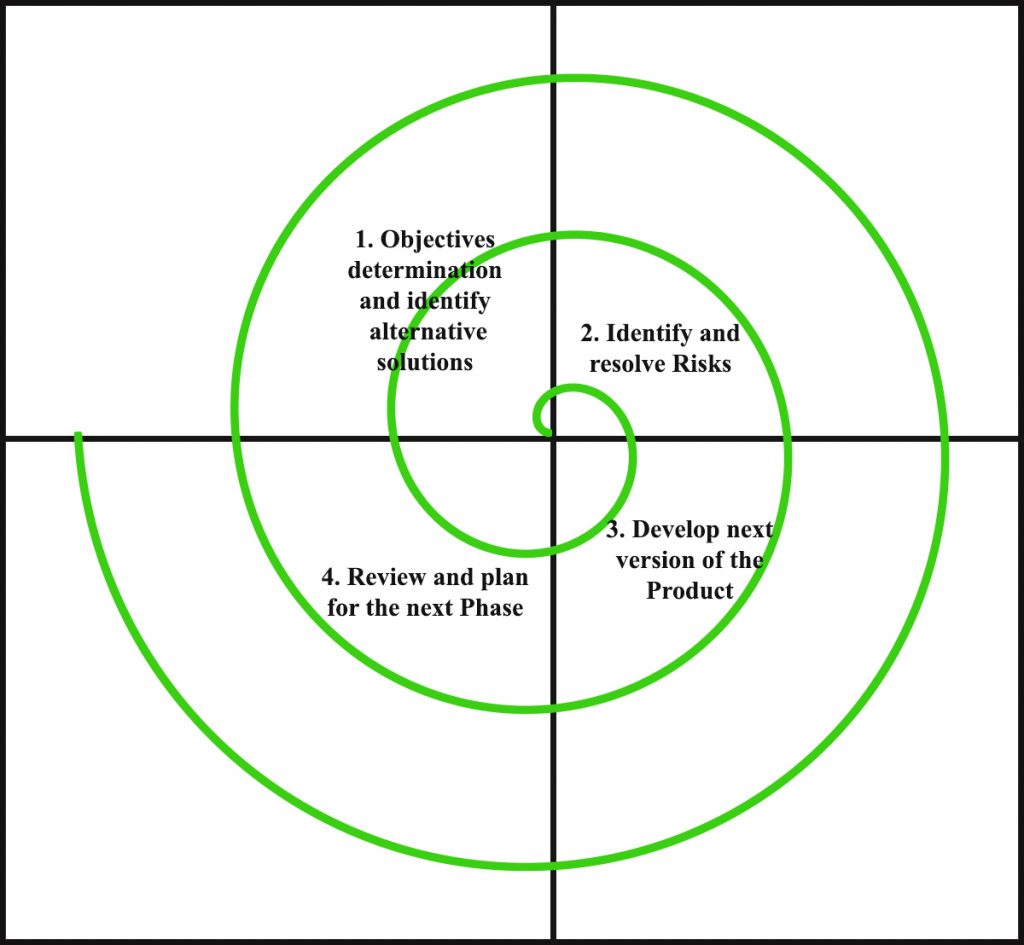The Spiral model is a type of software development process aimed at providing greater flexibility and control than the traditional “waterfall” model. In contrast to the waterfall model, which follows a linear process, the spiral model follows an iterative process.
The Spiral model was developed by Barry Boehm in 1988. It is sometimes referred to as the Boehm Spiral model.
The Spiral model involves a series of cycles or “spirals” in which a software system undergoes a series of iterations. Each iteration begins with an assessment of the current system, which allows for the identification of risks and requirements. These risks and requirements are then planned and addressed in the iteration, allowing the system to progress and become more mature.
The Spiral model has a number of advantages over the waterfall model. Its iterative approach allows for more flexibility and feedback, enabling changes and adjustments to be made as required. It also allows for better risk management, as risks can be addressed in each cycle. Finally, the Spiral model encourages early user involvement, allowing the system to be tailored to user needs.
In summary, the Spiral model is a software development model that follows an iterative process, allowing for greater flexibility and risk management than the traditional waterfall model. It is an ideal choice for software development projects that require frequent adjustment and changes.





